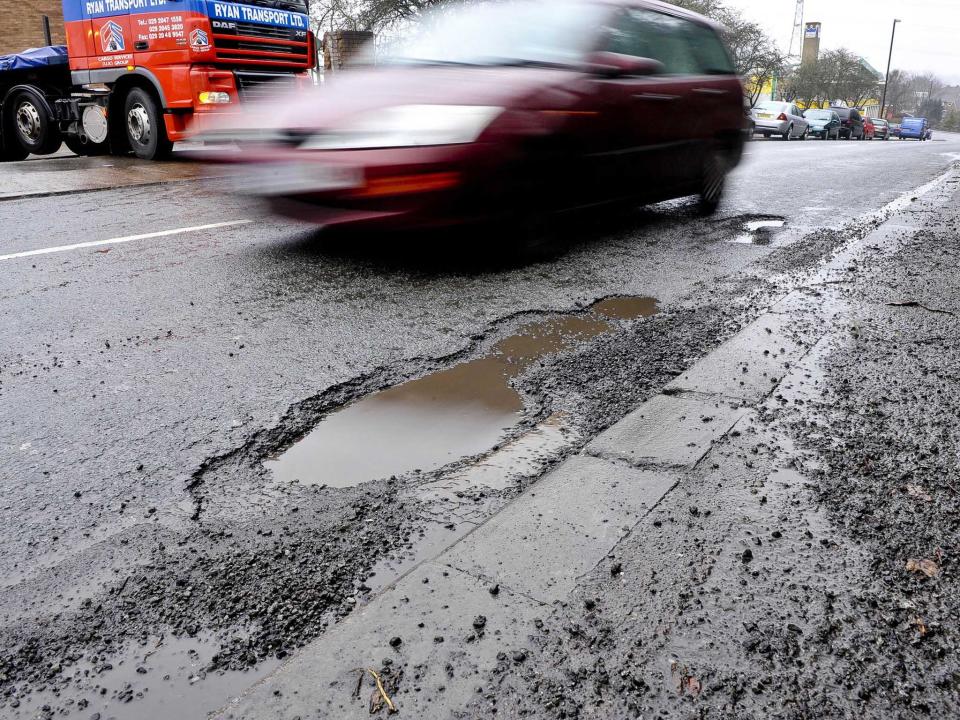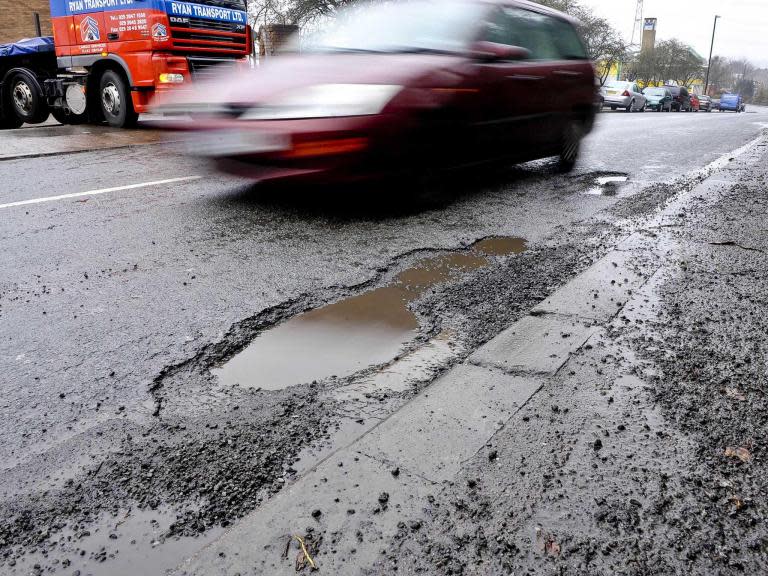Potholes are making us fat, NHS watchdog warns
The fight against potholes, the common enemy of retiree letter writers and men in too-tight lycra, has gained a new champion.
New guidance by the National Institute for Health and Care Excellence (NICE), the body which determines what treatment the NHS should fund, said lax road repairs and car-dominated streets were contributing to the obesity epidemic by preventing members of the public from keeping active.
Physical activity and the environment guidelines for councils say they should fill in pothole hazards, widen footpaths, and “hand back” the streets to save the country from its ever expanding collective waistline.
Other recommendations include a crackdown on parked cars, scaffolding and assorted “street furniture” which too often make it impossible for people in wheelchairs or with limited mobility to get around.
Potholes are an annual battle between disgruntled residents, while councils and cyclists have been killed and seriously injured as a result of unfilled obstacles. These risks are shown to discourage people from cycling to work, an easy way to stay fit.
It comes after the head of the NHS England said “obesity is the new smoking” as lifestyle-related diseases are threatening to bankrupt the health service.
The guidance on promoting active travel makes clear that even the extra exercise from using public transport can provide health improvements over and above car use.
It says motor vehicles should instead be restricted with road closures and charging zones and the space given over to footways and cycle lanes.
Footways cycle routes should be “safe, convenient and appealing” the guidance to councils says, adding: “Ensure they are even and do not include any hazards, for example from tree roots, potholes, broken paving slabs or seasonal and weather-related obstructions.”
Professor Mark Baker, director of the centre for guidelines at NICE, said: “Handing back some of the roads to pedestrians and cyclists will help people to become more active.
“Simple things such as ensuring street lights along footpaths are working and hedges are kept trimmed makes walking a more attractive option which will lead to people living healthier lives.
“People with limited mobility need extra help from their surroundings such as adapted crossings, public transport that can be used with a wheelchair and step free access. With a little thought these measures can be designed into our public spaces to help everyone be more active.”
The UK is the most overweight nation in Europe with 27 per cent of Britons now clinically obese.
In 2015/16, more than a quarter of adults in England were classified as inactive, doing less than 30 minutes exercise a week. Obesity is the second biggest cause of cancer after smoking.
Government measures to slash public spending have forced councils to raid reserves and cut public health and repair schemes.
Parliamentary spending watchdog the National Audit Office warned this is now reaching breaking point, with one in 10 set to empty their coffers in the next three years.
“This guidance reflects what councils are already striving towards for the benefit of motorists, cyclist and pedestrians, but with significant funding pressures this list of expectations is more idealistic than realistic," said Local Government Association’s transport spokesman Councillor Martin Tett.
“Councils have made some progress in tackling the backlog of road repairs, filling a pothole every 21 seconds. However, increasing traffic levels and more cars on our roads means that government needs to keep the funding of local roads as a priority in its spending plans to enable councils to embark on the widespread improvement of our roads that is desperately needed.
He added councils want the Government to grant powers for keeping pavements clear as is the case in London.

 Yahoo News
Yahoo News 

